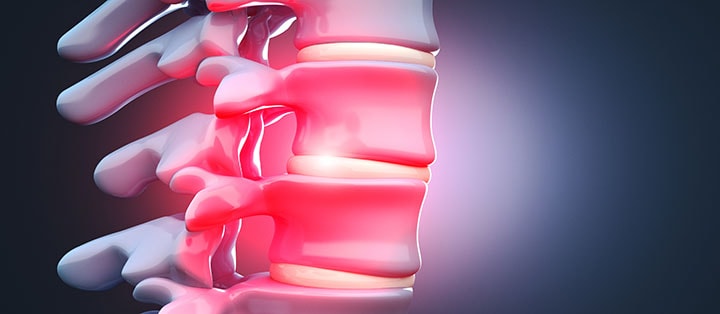You may experience sacroiliac (SI) joint pain as a sharp, stabbing pain that radiates from your hips and pelvis, up to the lower back, and down to the thighs. Sometimes it may feel numb or tingly, or as if your legs are about to buckle.
The SI joint is to blame in 15 to 30 percent of people with chronic lower back pain.
About 80 percent of adults in the United States will experience lower back pain during their lives. Lower back pain is a leading cause of missed workdays, and the most common cause of job-related disability.

What Are Sacro-Illiac (SI) Joints?
Your SI joints are located where the sacrum and ilium meet. The sacrum is the triangle-shaped bone near the bottom of your spine, just above your coccyx, or tailbone. The ilium, one of the three bones that make up your hip bones, is the uppermost point of your pelvis.The bones of the SI joints are jagged. These jagged edges help them stay in alignment. Spaces between the bones of the SI joints are filled with fluid, which provides lubrication. These spaces are also filled with free nerve endings, which send pain signals to the brain. When the bones in the SI joint become out of alignment, it can be painful.
All of the bones in the SI joints are connected by muscles and extra-strong ligaments, which add stability and allow for limited movement. Though minimal, this movement is necessary for you to remain upright and for women to give birth.
Sacro-Illiac (SI) Joint Pain Causes
Inflammation of one or both SI joints is called sacroiliac joint dysfunction, or sacroiliitis. Sacroiliitis may be caused by SI joint dysfunction. This is a general term that encompasses a number of conditions, including the following.• Osteoarthritis
Years of stress on the SI joint can eventually wear down the cartilage and lead to osteoarthritis. Associated with aging, osteoarthritis can affect the SI joint, spine, and other joints throughout the body.
• Ankylosing Spondylitis (AS)
Ankylosing Spondylitis (AS) is a type of inflammatory arthritis that affects the vertebrae and joints of the spine. In addition to causing pain, severe cases of AS can cause new bone growth that fuses the joints in the spine.
Although AS primarily affects SI joints, it can also cause inflammation in other joints and, more rarely, organs and eyes. AS is a chronic disease. It may cause intermittent episodes of mild pain, or more severe ongoing pain. This disease is diagnosed most frequently in young men.
• Gout
Gout, or gouty arthritis, can occur if your body has high levels of uric acid. This disease is characterized by joint pain, which can be severe. Although gout almost always affects the large toe first, all joints can be affected, including the SI joint.
• Injury
SI joints can be injured by trauma, such as injuries resulting from falls and car accidents.
• Pregnancy
Relaxin, a hormone released during pregnancy, makes the SI joints more elastic. This enables the pelvis to widen to accommodate the birth of a baby. It also makes the joints less stable. Combined with weight gain and the weight of the baby, this often leads to SI joint pain. Women who experience this are more prone to getting arthritis in the SI joints, a risk that increases with each pregnancy.
• Walking Patterns
Walking abnormally can cause SI joint dysfunction. You may walk abnormally because of issues like having one leg shorter than the other or favoring one leg because of pain. Correcting these problems may resolve your SI joint pain. Some women may walk abnormally while they’re pregnant. Once they give birth and resume walking normally, their SI joint pain may go away.
Sacro-Illiac (SI) Joint Pain Symptoms
Each person experiences symptoms of SI joint disorders somewhat differently. Common symptoms include:• pain in the lower back
• pain in the buttocks, hips, and pelvis
• pain in the groin
• pain limited to just one of the SI joints
• increased pain when standing up from a sitting position
• stiffness or a burning sensation in the pelvis
• numbness
• weakness
• pain radiating down into the thighs and upper legs
• feeling like your legs may buckle and not support your body

